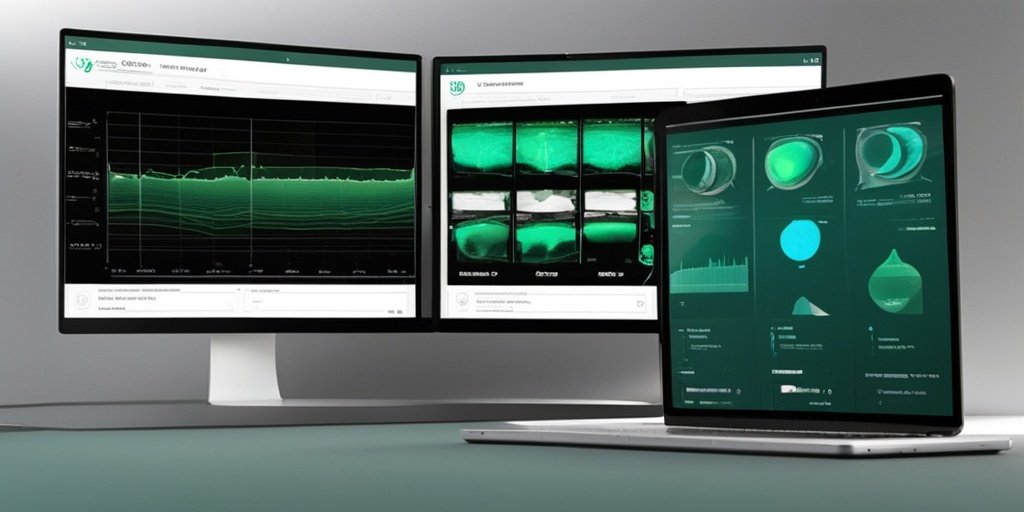⚡ Quick Summary
A recent systematic review highlights the transformative role of deep learning in the early diagnosis of oral cancer through smartphone and DSLR image analysis. The study reveals that advanced models like EfficientNet and DenseNet can achieve up to 100% precision and 97.5% accuracy, showcasing the potential of AI in enhancing diagnostic accuracy.
🔍 Key Details
- 📊 Dataset: 25 reviewed papers on deep learning in oral cancer diagnosis
- 🧩 Technologies used: Convolutional Neural Networks (CNNs), including DenseNet121, VGG19, EfficientNet-B0, and EfficientNet-B4
- ⚙️ Methodology: Systematic review registered with PROSPERO, employing PRISMA and QUADAS-2 for risk assessment
- 🏆 Performance metrics: Up to 100% precision, 99% specificity, and 97.5% accuracy achieved by various models
🔑 Key Takeaways
- 📈 AI tools are revolutionizing the early diagnosis of oral cancer.
- 💡 Deep learning models excel in classification, segmentation, and object detection tasks.
- 🔍 Challenges include limited annotated datasets and data imbalance.
- 🏆 EfficientNet-B4 and Faster R-CNN are particularly effective for multiclass classification.
- 🌍 Combining datasets and leveraging transfer learning can enhance detection capabilities.
- 🤖 Ethical considerations are crucial for integrating AI tools into healthcare systems.
- 📱 Handheld AI tools facilitate telemedicine integration, improving access to care.

📚 Background
The early diagnosis of oral cancer is vital for improving patient outcomes. Traditional diagnostic methods can be time-consuming and may not always yield accurate results. With the rapid advancements in technology, particularly in artificial intelligence and deep learning, there is a growing interest in utilizing these tools for more efficient and accurate diagnoses.
🗒️ Study
This systematic review analyzed the impact of handheld AI-based tools on oral cancer diagnosis, focusing on the application of Convolutional Neural Networks (CNNs). The researchers conducted a comprehensive search across multiple databases, including PubMed and Scopus, to identify relevant studies that utilized digital images for diagnosis.
📈 Results
The review encompassed 25 papers, revealing that models like DenseNet121 and EfficientNet-B0 performed exceptionally well in binary classification tasks. Notably, some models achieved an impressive 100% precision, 99% specificity, and 97.5% accuracy. These findings underscore the potential of deep learning to significantly enhance diagnostic accuracy in oral cancer.
🌍 Impact and Implications
The integration of AI tools in oral cancer diagnosis could lead to earlier detection and improved patient outcomes, particularly in resource-limited settings. The ability to utilize smartphones and DSLR cameras for diagnosis makes this technology accessible and practical. Furthermore, ethical considerations surrounding AI in healthcare will be essential to ensure trust and reliability in AI-driven diagnoses.
🔮 Conclusion
This systematic review highlights the remarkable potential of deep learning in transforming oral cancer diagnosis. By leveraging advanced AI models, healthcare professionals can achieve higher diagnostic accuracy and improve patient care. As we move forward, continued research and ethical considerations will be crucial for the successful integration of these technologies into healthcare systems.
💬 Your comments
What are your thoughts on the use of AI in diagnosing oral cancer? We would love to hear your insights! 💬 Share your comments below or connect with us on social media:
Deep learning for early diagnosis of oral cancer via smartphone and DSLR image analysis: a systematic review.
Abstract
INTRODUCTION: Diagnosing oral cancer is crucial in healthcare, with technological advancements enhancing early detection and outcomes. This review examines the impact of handheld AI-based tools, focusing on Convolutional Neural Networks (CNNs) and their advanced architectures in oral cancer diagnosis.
METHODS: A comprehensive search across PubMed, Scopus, Google Scholar, and Web of Science identified papers on deep learning (DL) in oral cancer diagnosis using digital images. The review, registered with PROSPERO, employed PRISMA and QUADAS-2 for search and risk assessment, with data analyzed through bubble and bar charts.
RESULTS: Twenty-five papers were reviewed, highlighting classification, segmentation, and object detection as key areas. Despite challenges like limited annotated datasets and data imbalance, models such as DenseNet121, VGG19, and EfficientNet-B0 excelled in binary classification, while EfficientNet-B4, Inception-V4, and Faster R-CNN were effective for multiclass classification and object detection. Models achieved up to 100% precision, 99% specificity, and 97.5% accuracy, showcasing AI’s potential to improve diagnostic accuracy. Combining datasets and leveraging transfer learning enhances detection, particularly in resource-limited settings.
CONCLUSION: Handheld AI tools are transforming oral cancer diagnosis, with ethical considerations guiding their integration into healthcare systems. DL offers explainability, builds trust in AI-driven diagnoses, and facilitates telemedicine integration.
Author: [‘Thakuria T’, ‘Rahman T’, ‘Mahanta DR’, ‘Khataniar SK’, ‘Goswami RD’, ‘Rahman T’, ‘Mahanta LB’]
Journal: Expert Rev Med Devices
Citation: Thakuria T, et al. Deep learning for early diagnosis of oral cancer via smartphone and DSLR image analysis: a systematic review. Deep learning for early diagnosis of oral cancer via smartphone and DSLR image analysis: a systematic review. 2024; (unknown volume):(unknown pages). doi: 10.1080/17434440.2024.2434732